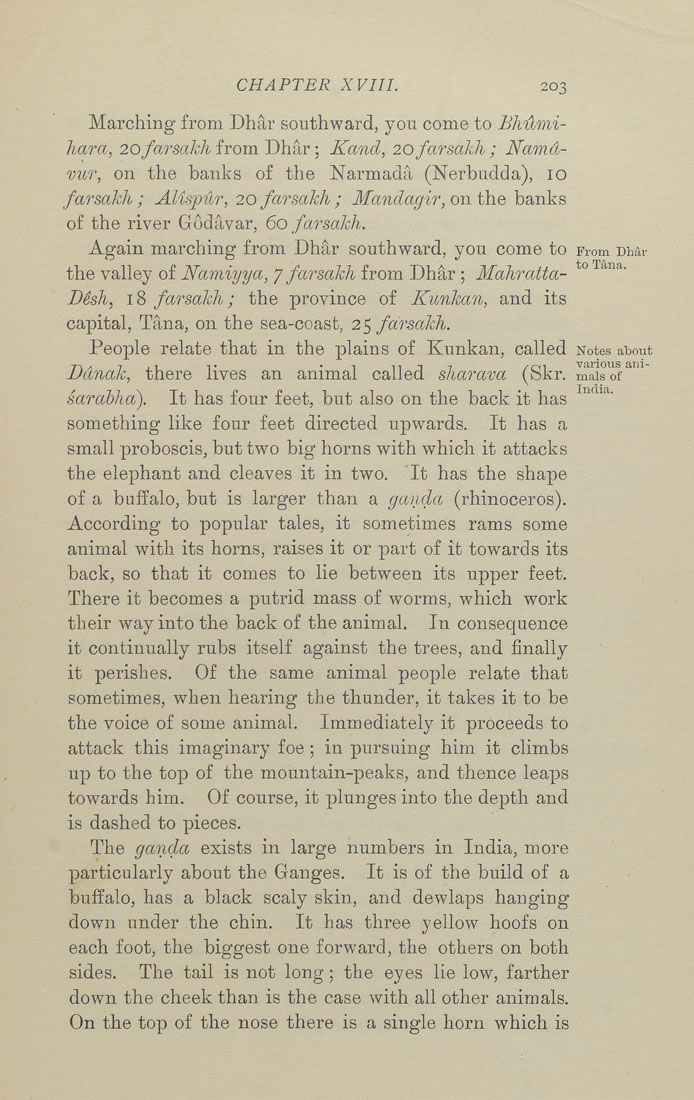Bīrūnī, Muḥammad ibn Aḥmad, Alberuni's India (v. 1)
(London : Kegan Paul, Trench, Trübner & Co., 1910.)
|
||
|
|
|
|
| Page 203 |

various ani¬
mals 0
India.
CHAPTER XVIII. 203
Marching from Dhar southward, you come to BhiXmi-
hara, 20 farsakh ironx Dhar; Kand, 20 farsakh ; Namd-
vur, on the banks of the Narmada (Nerbudda), 10
farsakh; Alispur, 20 farsakh; Mandagir, on the hanks
of the river Godavar, 60 farsakh.
Again marching from Dhar southward, you come to From Dhar
the valley of Namiyya, y farsakh from Dhar ; Mahratta-
DSsh, 18 farsakh; the province of I{iunkan, and its
capital, Tana, on the sea-coast, 2^ farsakh.
People relate that in the plains of Kunkan, called Notes about
Ddnak, there lives an animal called sharava (Skr. mais of
sarahha). It has four feet, but also on the back it has
something like four feet directed upwards. It has a
small proboscis, but two big horns with which it attacks
the elephant and cleaves it in two. It has the shape
of a buffalo, but is larger than a ganda (rhinoceros).
According to popular tales, it sometimes rams some
animal with its horns, raises it or part of it towards its
back, so that it comes to lie between its upper feet.
There it becomes a putrid mass of worms, which work
their way into the back of the animal. In consequence
it continually rubs itself against the trees, and finally
it perishes. Of the same animal people relate that
sometimes, when hearing the thunder, it takes it to be
the voice of some animal. Immediately it proceeds to
attack this imaginary foe ; in pursuing him it climbs
up to the top of the mountain-peaks, and thence leaps
towards him. Of course, it plunges into the depth and
is dashed to pieces.
The ganda exists in large numbers in India, more
particularly about the Ganges. It is of the build of a
buffalo, has a black scaly skin, and dewlaps hanging
down under the chin. It has three yellow hoofs on
each foot, the biggest one forward, the others on both
sides. The tail is not long; the eyes lie low, farther
down the cheek than is the case with all other animals.
On the top of the nose there is a single horn which is
|
| Page 203 |







